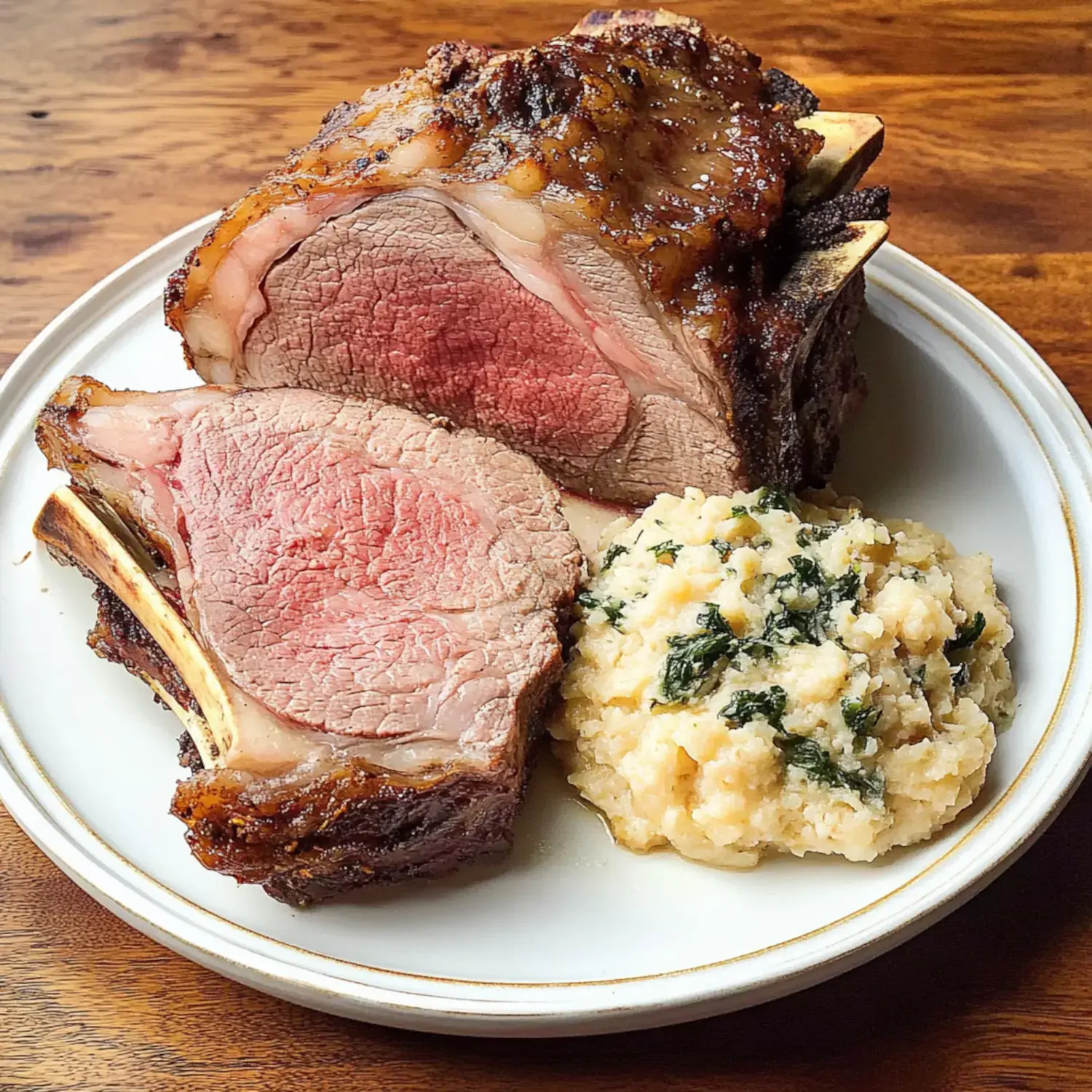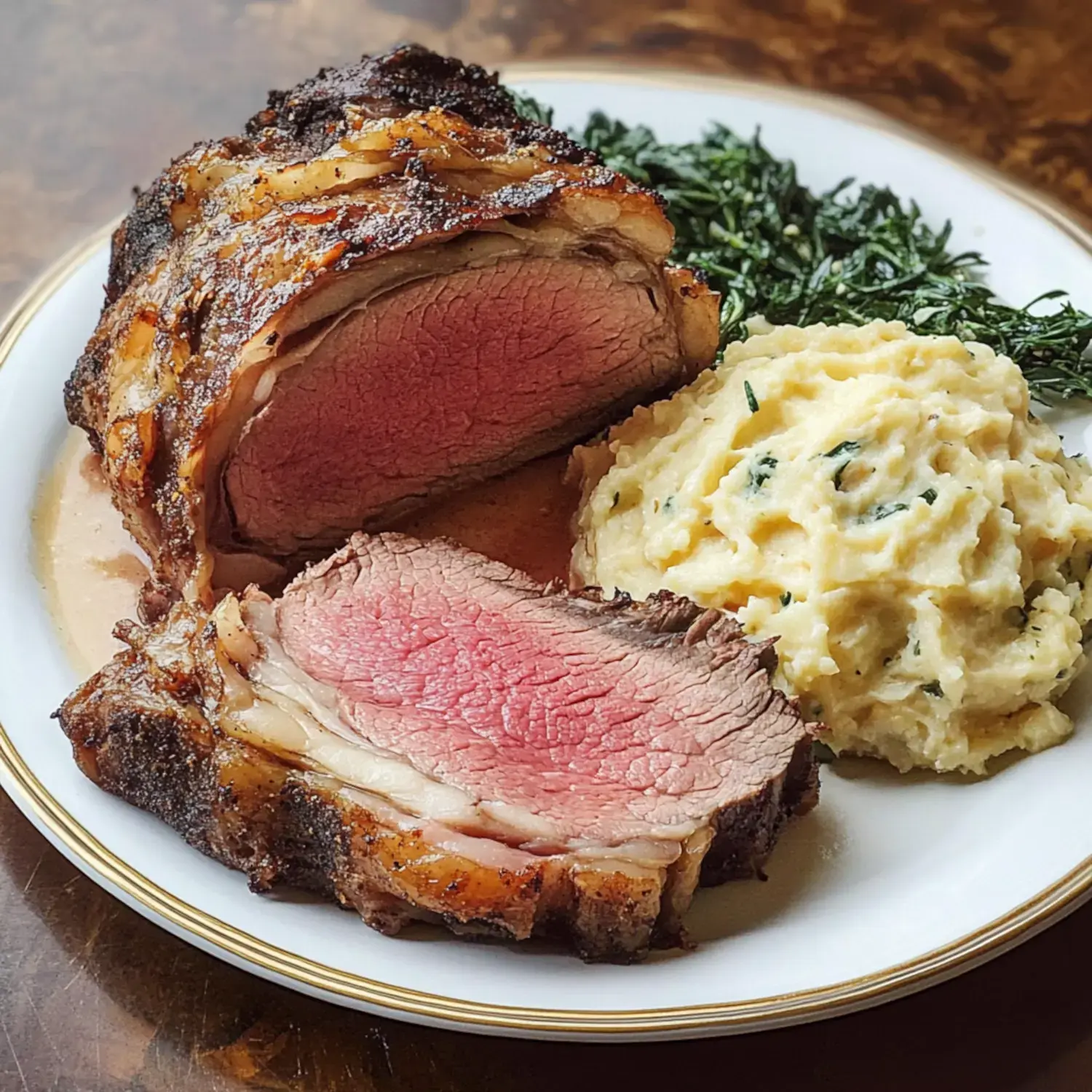 Pin it
Pin it
Our holiday tables now feature what folks call my famous prime rib. The beautiful dark brown outside that breaks away to show soft pink meat makes everyone smile. I've spent many years getting this dish just right, and trust me, it's all about how you cook it and taking your time to make that jaw-dropping main dish.
Why This Dish Stands Out
The trick is cooking it super hot at first, then turning it down low. This way works every single time, making that amazing outside while the inside stays perfectly cooked. Whenever I bring this roast to the table, everyone thinks I've done something fancy, but it's actually pretty easy.
Getting To Know Your Cut
Prime rib comes from those special ribs numbered 6 to 12. If you think about it, those delicious ribeye steaks are just slices cut from this bigger piece. I really like how bones make it taste better, but you can ask your meat guy to take them off and tie them back, which makes serving a whole lot simpler.
Prime Rib Must-Haves
- Prime Rib Roast: For big gatherings, I pick one that's 12 to 16 pounds, and it looks amazing.
- Kosher Salt and Black Pepper: Don't hold back - they help create that fantastic outer layer.
- Optional Aromatics: Fresh thyme, rosemary, and garlic bring such nice smells to the table.
- Butter: Spreading some soft butter helps get that lovely brown color outside.
Prime Rib Cooking Steps
- Step 1 - Get Your Roast Ready
- Take the meat out for 2 hours to warm up, and put salt and pepper all over it right away when it comes from the cold.
- Step 2 - High Heat Start
- Heat your oven to 500°F and cook the meat for 15 minutes to start that awesome crust. Make sure to run your fan too.
- Step 3 - Lower The Heat
- Turn it down to 325°F and let it cook about 13 minutes for each pound. Check with a tool - 115°F for pink, 120-130°F for less pink.
- Step 4 - Wait Then Cut
- The toughest part is waiting 30 minutes before slicing, but you'll get much juicier meat if you do.
Insider Advice
Get to know your meat seller, they'll help you find just what you need. Put your spices on as soon as you take the meat from the fridge, it really matters. Don't skip the waiting time, and always use a good meat checker since temps don't lie.
Tasty Sauce Matches
Nothing beats serving this with creamy horseradish sauce - that cool zip goes so well with the rich meat. A thick sauce made from the pan juices works great too, or just go simple with some meat juice so you can really taste the beef.
 Pin it
Pin it
Storing Extras
Any leftover meat stays good in your fridge for around 4 days. When you want to eat it again, add a bit of beef broth and warm it slowly in the oven so you don't lose that nice pink color we worked so hard to get.
Frequently Asked Questions
- → What size roast should I get for a group?
- Allow about one pound per person or one bone for two people. A 7-pound cut works great for serving 6-8 with extras. The bones boost flavor while cooking and can be served too.
- → Why should the meat sit out before cooking?
- Bringing the roast to room temperature helps it cook evenly all the way through. It also lets the seasoning sink in better for full flavor.
- → Do I really need the high-heat searing step?
- Skipping it is an option, but that browning step gives the outside a crisp, tasty crust and locks in juices. Expect a little smoke while doing this!
- → How long should I wait after it's cooked?
- After roasting, wait at least 30 minutes to carve. This lets the meat reabsorb juices, keeping it moist and delicious, while also letting the temperature stabilize a little.
- → Can I prep the horseradish sauce beforehand?
- Sure, you can make it a day early and keep it chilled. The extra time actually improves the flavor. Just mix it up before serving to refresh it.
